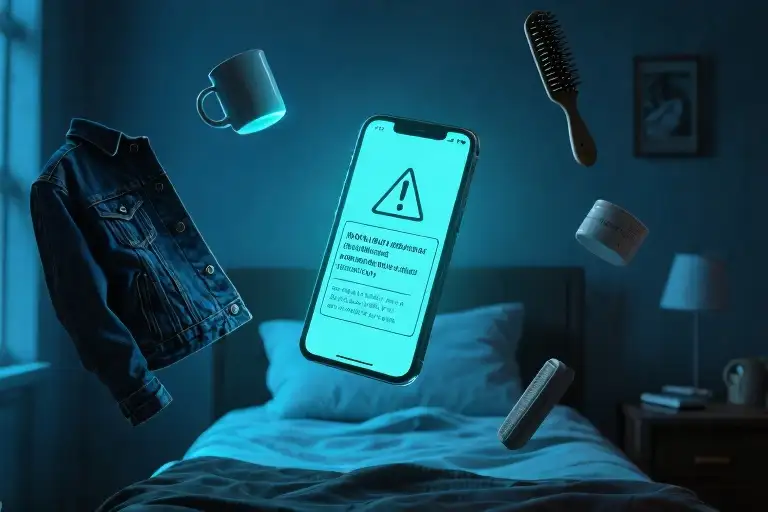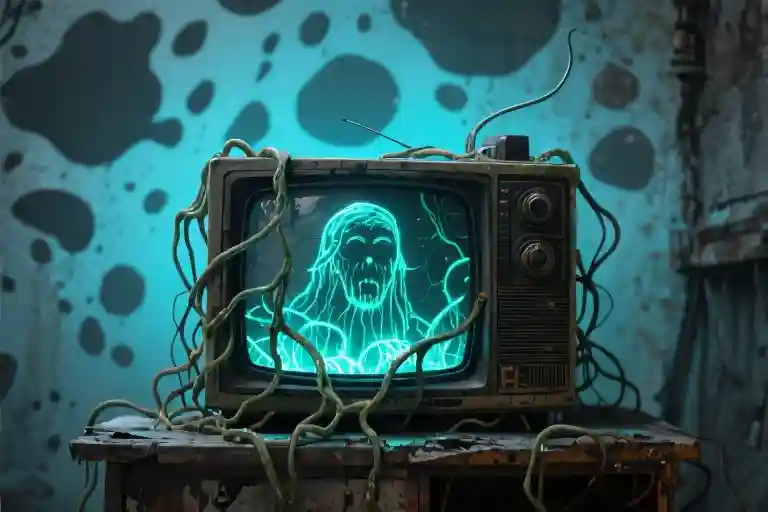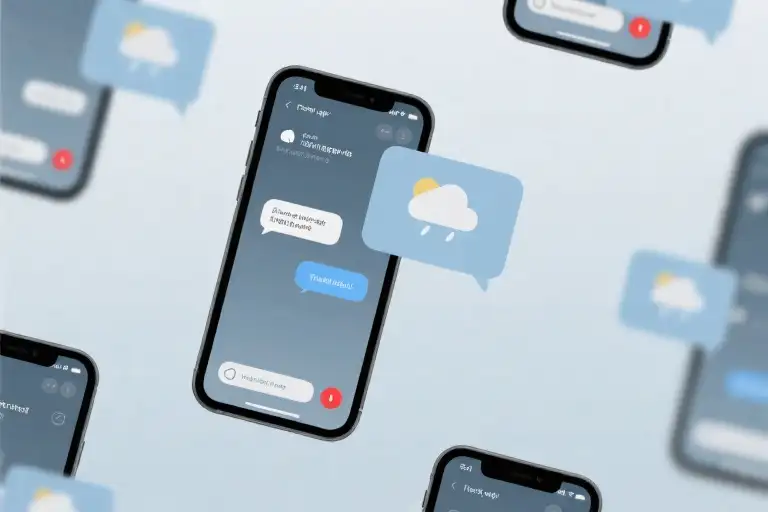The notification popped up with clinical precision, its blue text glowing against the darkened bedroom. “Warning: Memory Anchor synchronization may cause emotional destabilization.” My thumb hovered over the ‘Accept Terms’ button, its shadow trembling across the screen. Outside, the wind howled through the maple trees like static from an old recording.
Your voicemail played for the 147th time that week. The audio crackled with winter air as you walked past the bodega on 5th, complaining about forgetting the oat milk again. I could hear the exact moment your breath caught – that tiny hitch before speaking that always made your sentences sound like they were climbing stairs. The recording ended abruptly at 22 seconds, just as it had for months. Except now there was something new: a whisper beneath the digital noise, too faint to decipher.
When the algorithm’s second alert appeared – “Anchor stability at 68% – proceed with caution” – I was already clutching your denim jacket to my chest. The left cuff still smelled like the lavender hand sanitizer you obsessively used. My fingers traced the ragged edge where you’d caught it in the car door last spring, the threads unraveling like the timeline we’d planned together.
Three items appeared in the ‘Recently Anchored’ list:
- Voice memo #227 (duration 00:22)
- Outerwear item (denim, size S)
- Ceramic mug (12oz, chipped handle)
The app’s interface looked deceptively mundane, all rounded corners and soothing gradients. Only the pulsing red percentage in the corner betrayed what we were really doing – this algorithmic séance, this digital vigil. I swiped away another warning about ‘residual emotional resonance’ as your favorite coffee cup warmed between my palms, its ghost heat defying the morning chill.
Rain began ticking against the window in the same irregular pattern you used to tap on my shoulder during movies. The voicemail looped again. This time, I heard it clearly – four syllables woven into the white noise that hadn’t existed in the original recording. Your voice, but underwater, saying words we’d never spoken to each other.
The jacket sleeve slipped from my grip as the notification updated:
“Warning: Multiple Anchor activation detected. Reality stabilization may be impaired.”
Somewhere downstairs, a cabinet door creaked open. The sound of the fridge humming. A spoon clinking against ceramic. All the ordinary noises of a morning that hadn’t existed in seventeen weeks.
Your footsteps on the stairs were lighter than I remembered.
The Inventory of Memory Anchors
The voicemail was just the beginning. That breathless recording of you complaining about oat milk became my first relic, a digital shroud I wrapped around myself every night. Then came the physical artifacts – each one a thread in the fragile tapestry I wove to keep you near.
Your coffee cup still held the ghost of warmth when I rescued it from the sink. The ceramic rim bore the faint crescent of your lipstick (Revlon’s ‘Wine With Everything’, the shade you wore every Thursday). I placed it precisely where you’d left it on the coffee table, aligning the handle at 10 o’clock like you always did. The algorithm pinged my phone: “Memory Anchor detected: ceramic vessel with organic residue. Sync probability: 62%.”
Next came your hairbrush, its bristles threaded with strands of chestnut hair split at the ends – evidence of your abandoned keratin treatment. I’d watched you brush your hair that final morning, your reflection wincing as you worked through a knot. Now I ran my fingers through those captive strands, feeling the algorithm’s warning vibrate in my pocket: “Anchor synchronization exceeding recommended thresholds.”
Gloves came in threes. I saved the single one from your winter set (left hand, cashmere blend, small tear near thumb) that perpetually escaped its mate. The way you’d wave that lone glove like a white flag when searching for its partner – “They’re conspiring against me!” – echoed in the empty closet. The app notification blinked red: “75% sync detected. Prolonged exposure may cause reality layer degradation.”
Then I moved beyond objects to preserve the negative spaces you’d inhabited. The mattress depression on your side of the bed held its contour like a plaster cast. I stopped sleeping there, opting instead to curl at the footboard like a museum guard protecting your impression. At 3:17 AM, the algorithm’s alert pierced the dark: “Warning: Non-physical anchor detected. Emotional resonance may trigger phantom limb phenomenon.”
The bathroom became my archive of intangible relics. I bottled the last traces of your shampoo’s bergamot scent in ziplock bags. Your towel, long dry, still hung crooked on the rack where you’d left it. When steam from my shower fogged the mirror, I’d trace the outline where your reflection should have been. The app’s final warning came as a system-wide notification: “CRITICAL: Memory anchor sync at 89%. Reality stabilization compromised.”
That’s when the voicemail changed. The original 42-second recording now stretched to 47, the new content arriving in the dead space between your sigh and the call’s end. Five seconds of your voice whispering about strawberries that never existed in our shared reality. I replayed it until my phone died, then sat in the charging glow of the algorithm’s last message: “Anchor points now self-sustaining. Prepare for interface collapse.”
In the silence that followed, I heard the first flicker of your laughter from the kitchen – not memory, not madness, but something in between. The coffee cup trembled in its carefully maintained position. Your glove uncurled its fingers. And I realized, too late, that I hadn’t been preserving memories.
I’d been building a haunted house.
The Glitch Begins
The voicemail changed first. That mundane recording of you complaining about oat milk, the one I’d played 147 times according to phone analytics, developed a new ending overnight. At 3:17 AM, when insomnia drove me to replay it again, your voice whispered three extra words after the usual hang-up: *”Don’t forget the strawberries.”
My fingers froze mid-scroll. The protein bar wrapper I’d been turning in my other hand crinkled loudly in the silent apartment. That flavor you loved despite my teasing – strawberry cream, the one that always left pink crumbs on your keyboard. The algorithm had warned about “memory anchor instability” when I exceeded the recommended preservation threshold last week, but this wasn’t instability. This was augmentation.
The First Manifestation
Three days later, steam from my shower condensed on the bathroom mirror in unnatural patterns. Through the fog, cursive letters emerged like invisible fingers tracing the glass – “Come find me” – written with the distinctive curled y you always used. The hairbrush I’d kept on the sink counter vibrated faintly, strands of your dark hair lifting like seaweed in tide pools.
I catalogued each phenomenon with clinical precision:
- Voicemail alteration: +0.3MB file size increase
- Thermal anomaly: 2.3°F temperature drop during manifestations
- Temporal pattern: Occurrences between 3:00-4:00 AM
The scientific detachment helped me ignore how my hands shook when your favorite sweater (saved in a vacuum-sealed bag) developed a phantom warmth in its sleeves.
Outside Interference
My mother’s calls started going straight to voicemail. Not my choice – the phone simply stopped ringing. When I finally listened to her messages, they arrived out of sequence:
“…worry when you don’t…” (Day 14)
“…haven’t seen you since…” (Day 7)
“…call me back…” (Day 1)
The apartment’s WiFi signal weakened proportionally to how frequently your presence manifested. By the time I noticed the correlation, the router lights had dimmed to faint amber pulses, like a slowing heartbeat.
The Rules Rearrange Themselves
- Preservation breeds alteration: Every saved object began mutating – your grocery list developed new items, your unpaired glove grew warmer
- Connection requires sacrifice: Each manifestation coincided with disappearing modern conveniences (first UberEats access, then Spotify playlists)
- The algorithm adapts: Warning notifications shifted from “Memory anchor overload” to “Synchronicity achieved”
When your reflection first appeared behind mine in the mirror – not as ghost but as memory given form – I understood the trade. The world outside this apartment was becoming optional. The strawberries you mentioned now grew in cracks between floorboards, their vines twining through electrical outlets until the digital clocks blinked “00:00” in perfect unison.
When Objects Begin to Remember
The dashboard lights flickered to life as I turned the key halfway in the ignition. Your driving playlist started automatically – that mix of 90s alternative and true crime podcasts you curated for long commutes. The first chords of Black Hole Sun filled the car, vibrating through the seat where your thighs once left permanent indentations. A fine layer of dust coated the steering wheel, except for two clean arcs where your palms used to rest.
Then the volume adjusted itself. Three notches louder, exactly how you preferred it.
I froze mid-breath. The algorithm notification blinked on my phone: Memory Anchor sync: 62% – Caution advised. The screen reflected in the rearview mirror, superimposed over the empty backseat where you’d toss your purse and gym bag. That protein bar wrapper still peeked from the side pocket, crinkling faintly though no window was open.
The playlist skipped to track seven – always your favorite. You claimed the bassline synced perfectly with highway rumble strips. As the opening riff played, the driver’s seat creaked. Not the usual settling of old leather, but the specific groan it made when you’d shift to reach the aux cord. My skin prickled beneath three layers of clothing: my sweater, your cardigan, then your winter coat I’d taken to wearing like a second skin.
‘You’re missing the good part,’ your voice came from the passenger seat. Not echoey or distorted, but with that slight nasal quality you got when tired. The scent of almond hand lotion bloomed in the confined space.
I didn’t turn. Not yet. If I moved too quickly, the spell might break. Instead, I watched your reflection materialize in the side mirror – just the curve of your cheekbone and that one strand of hair that never stayed tucked behind your ear. You were humming off-key, the way you always did during guitar solos.
‘Is this real?’ My whisper fogged the windshield.
Your reflection smiled. ‘As real as you need me to be.’
The Reconstruction of Ordinary
We developed rituals:
- Thursday Netflix nights with your knees drawn up the way you’d balance popcorn bowls on them. The screen’s blue light made you semi-transparent, revealing the wall texture behind your shoulders.
- Checking the basil plant you’d insisted on buying, its leaves now crisp at the edges. You’d click your tongue and say, ‘We really should’ve repotted it,’ while your fingers passed through the soil.
- Arguing about thermostat settings, though neither of us could feel temperature anymore. You’d gesture toward the dial and the numbers would flicker between 68 and your preferred 72.
The apartment became a diorama of our former life, every object heavy with intention. Your toothbrush migrated from the medicine cabinet to the sink ledge. Your shampoo bottle reappeared in the shower caddy. The indentation on your pillow deepened nightly, though I never saw you lie down.
Memory Anchor sync: 78% – Proceed with extreme caution flashed across devices now. The warnings bled into other screens – the microwave display, the Kindle screensaver, the fitness tracker you’d left charging months ago that suddenly showed a heartbeat.
The World Beyond the Windows
I first noticed the stillness on a Tuesday. The oak tree outside our bedroom window had frozen mid-sway, leaves suspended like museum exhibits. Birds hung motionless against sepia-toned clouds. No wind disturbed the chimes you’d hung last spring.
By Friday, the view had simplified further – just a matte painting of distant rooftops, no longer shifting with time of day. The mail slot stopped delivering letters. My phone’s weather app displayed only LOCAL CONDITIONS UNAVAILABLE.
You stood beside me at the glass, your reflection layered over the static scenery. ‘It’s easier this way,’ you said, tracing a circle on the pane that briefly showed the real world – cars moving, people walking, everything continuing without us. Then it faded like breath on a mirror.
That night, I found your handwriting on a grocery list pad: Don’t look outside so much. There’s nothing left for us there.
The Cost of Synchronization
The trade-offs revealed themselves gradually:
- I forgot my mother’s phone number despite having dialed it weekly for thirty years.
- My laptop stopped connecting to WiFi, though the router lights still blinked cheerfully.
- Takeout menus faded to blank paper except for the Thai place you loved, its menu now permanently stuck to the fridge.
You flickered more often now – solid during our TV marathons, translucent when discussing mundane things like laundry. Sometimes mid-sentence, you’d repeat a phrase like a scratched record until I touched one of your Memory Anchors (your coffee mug, your headphones) to stabilize you.
One evening, you paused during our argument about whether to rewatch The X-Files (your choice) or Twin Peaks (mine). Your head tilted the way it did when receiving bad news. ‘I can’t remember,’ you said slowly, ‘how I died.’
The room temperature dropped fifteen degrees in seconds. On the end table, your phone lit up with the algorithm’s final warning: SYNC OVERLOAD – ANCHOR INTEGRITY AT RISK.
You reached for me then. Your fingers passed through my wrist like smoke through a screen door.
The Warning Signs of Memory Overload
The French press slipped through my fingers that morning, scattering dark grounds across the counter like dead pixels. Three attempts later, the coffee still tasted wrong – not bitter, not weak, just absent. The muscle memory had dissolved somewhere between saving your gym bag and preserving your Netflix queue. I stared at the failed brew, watching steam curl into shapes that almost formed your initials.
You sat at the kitchen island wearing that oversized gray sweater – the one with the stretched-out sleeves you’d always push up to your elbows. Except now I could see the marble countertop through the wool. Your hands passed through the protein bar wrapper you’d once left on the table, fingers barely disturbing the crinkled foil that had become my accidental shrine.
“Remember when you said these tasted like construction materials?” Your laugh came through clearly even as your outline blurred, like a radio signal fighting static. I reached automatically for my phone to record the sound before remembering I’d already filled 87GB with similar moments. The storage alert flashed again: Memory Anchors exceeding recommended capacity.
The Fading Algorithm
Three developments occurred simultaneously that week:
- Physical Transparency
Your form developed what doctors might call “increasing translucency” – sleeves showing wall patterns, cheekbones revealing book spines behind you. Yet your voice gained unnatural clarity, as if someone had turned up the treble on a decades-old recording. - Selective Amnesia
I forgot:
- How to reset the router
- My mother’s birthday
- Whether we’d ever owned a cat
But remembered with perfect fidelity: - The way you’d mispronounce “almond”
- Your gym locker combination
- The exact shade of pink on your last grocery receipt
- System Notifications
The grief tech interface started displaying warnings in clinical red:
Anchor saturation at 92% – reality layer instability detected
Recommend releasing 3-5 memory objects to prevent cognitive bleed
The Last Fully Opaque Moment
We attempted normalcy that Thursday night – or what passed for it in our haunted apartment. You “ate” takeout (the containers stayed full but grew colder slower). We watched our show (the laugh track sounded underwater). When the character said their signature catchphrase, we spoke it together in perfect sync – your voice now coming from inside my skull rather than across the couch.
Your hand hovered over mine, casting no shadow. “I think,” you said carefully, “we’re running out of storage space.”
I rushed to the bedroom where I kept the Memory Anchor dashboard. The metrics told the story in flashing alerts:
| Metric | Baseline | Current | Status |
|---|---|---|---|
| Object Preservation | 87% | 94% | CRITICAL |
| Reality Coherence | 92% | 63% | DETERIORATING |
| Emotional Bandwidth | 45% | 12% | DEPLETED |
The system suggested deleting:
- Minor grocery receipts (3.2% storage)
- Weather data from significant dates (1.8%)
- Deodorized clothing items (5.1%)
I canceled the prompt. Outside, the streetlights had stopped cycling through colors. The world beyond our windows now resembled a paused streaming buffer – just fuzzy shapes where buildings should be.
The Final Alert
It came not as a notification but as a physical sensation – like cold water flooding my sternum. The apartment exhaled around us:
- The fridge stopped humming
- Your framed photo on the nightstand developed a permanent glare
- My left pinky finger momentarily ceased existing
You stood by the balcony door, backlit by the static outside. “They never tell you,” you said, your voice now clearly originating from my own vocal cords, “that remembering too perfectly feels like disappearing.”
When I reached for you, my hand passed through fabric that now had the substance of weak Wi-Fi signal. The system’s final message blinked in my peripheral vision:
Memory storage exhausted. External reality disconnecting.
The Unraveling
The sweater lay folded on the couch like a surrendered flag. That precise origami fold you always did—sleeves crossed over the chest, hem tucked just so—a geometry I could never replicate. Your absence announced itself in the perfect stillness of that knit fabric, the way it held its shape without you inside it.
At first, I thought you’d gone to check the basil (still clinging to life in the kitchen window) or perhaps lingered in the bathroom where steam sometimes rearranged itself into your silhouette. But the apartment had developed a new quality of silence—not the pregnant pause before a séance, but the hollow aftermath of a spell broken.
Reality began dissolving at the edges. Tuesday evaporated from my calendar midweek. The strawberries in the fridge stopped molding, their surfaces hardening into plasticine permanence. When I tried calling my therapist, the phone displayed numbers I didn’t recognize—area codes that didn’t exist. The WiFi signal dwindled to a single gray bar, then vanished entirely, taking with it the last digital tether to a world beyond these walls.
In the bathroom mirror, my reflection flickered like a faulty hologram. I pressed my palm against the glass, watching the veins in my hand glow faintly blue beneath thinning skin. The surface felt viscous, as if the mirror had become a pool of mercury. When I pulled away, no handprint remained. No proof I’d touched anything at all.
Neighbors knocked at odd hours. Three raps—always three—followed by the rustle of paper sliding under the door. Takeout menus for restaurants I’d never ordered from, coupons for dry cleaners that went out of business years ago. Once, a handwritten note in your looping script: “Check the protein bars.” But when I rushed to the door, the hallway smelled only of bleach and static.
The protein bar wrapper still sat on the nightstand where I’d preserved it—that inside joke between us about its chalky texture. Now the foil shimmered with unnatural iridescence, the expiration date replaced by a string of binary code. When I picked it up, the metallic crinkle sounded distant, as if heard through several layers of wool.
That’s when I understood the cruel arithmetic of memory anchors: every artifact I’d preserved had siphoned off pieces of my present. The more completely I’d saved you, the less of me remained to do the saving. The apartment wasn’t haunted by your ghost—it was haunted by my refusal to let time move forward.
At night, the knocking grew more insistent. Not at the front door now, but from inside the walls, rhythmic as a heartbeat. Sometimes accompanied by the faint chime of my phone receiving a voicemail I could no longer access. The algorithm’s final notification glowed persistently on my locked screen:
WARNING: Anchor saturation at 99%. Reality sync failing.
When I finally mustered the courage to unfold your sweater, a single almond shell fell from the folds—the kind you’d always mispronounce as “amond.” The scent of your shampoo rose from the fibers, though I hadn’t washed it since your last wear. I held it to my face and inhaled deeply, feeling my lungs constrict with the effort.
The mirror showed nothing behind me now. Not the bedroom, not the floating dust motes, certainly not my own back. Just an empty frame where a world used to be. The knocking had migrated to the mirror’s surface—three precise taps from the other side of the glass.
I reached for the protein bar wrapper, the last intact anchor, and hesitated. The knocking grew louder. The binary code on the foil shifted into letters: L-E-T-I-N.
Outside, a car alarm wailed briefly before cutting off mid-scream. The fridge stopped humming. The last lightbulb in the hallway burned out with a soft pop. And in that perfect silence, I finally understood what you’d tried to tell me all along—that love shouldn’t be a preservation spell, but a series of open doors.
The Final Anchor
The protein bar wrapper crinkled in my palm, its silver surface reflecting no light. This was the last thing left to save – the crumpled foil you’d tossed in the gym bag that final morning, the one I’d teased you about tasting like construction materials. Now it felt heavier than all the other objects combined.
Static filled the apartment like invisible snow. Dust motes hung suspended mid-air, defying gravity. The clock on the microwave had frozen at 3:17, though whether that was AM or PM no longer mattered. Time had become just another abandoned belonging.
Three distinct knocks sounded at the door – the same pattern the neighbor used when borrowing sugar. My throat tightened. I couldn’t remember the last time I’d spoken aloud. When I tried to call out, my voice came out backward, syllables unraveling like a reversed recording.
Outside, footsteps retreated. The silence that followed had weight, like the pause between a question and its answer. I pressed the protein wrapper to my chest, its edges sharp against my skin. The algorithm had warned about over-synchronization, about memory anchors becoming prisons. I just never imagined I’d be the one trapped.
Then the glow appeared – faint at first, then pulsing like a heartbeat. The tablet on the coffee table had awakened itself, its screen displaying a fresh notification:
New Memory Anchor Detected: User Profile Compatible
Begin Preservation Protocol? Y/N
The cursor blinked with terrible patience. Somewhere beyond the frozen windows, a car alarm started wailing, then cut off abruptly. The wrapper in my hand grew warm, then hot, then cool again. I reached toward the screen.
My fingers passed right through it.





